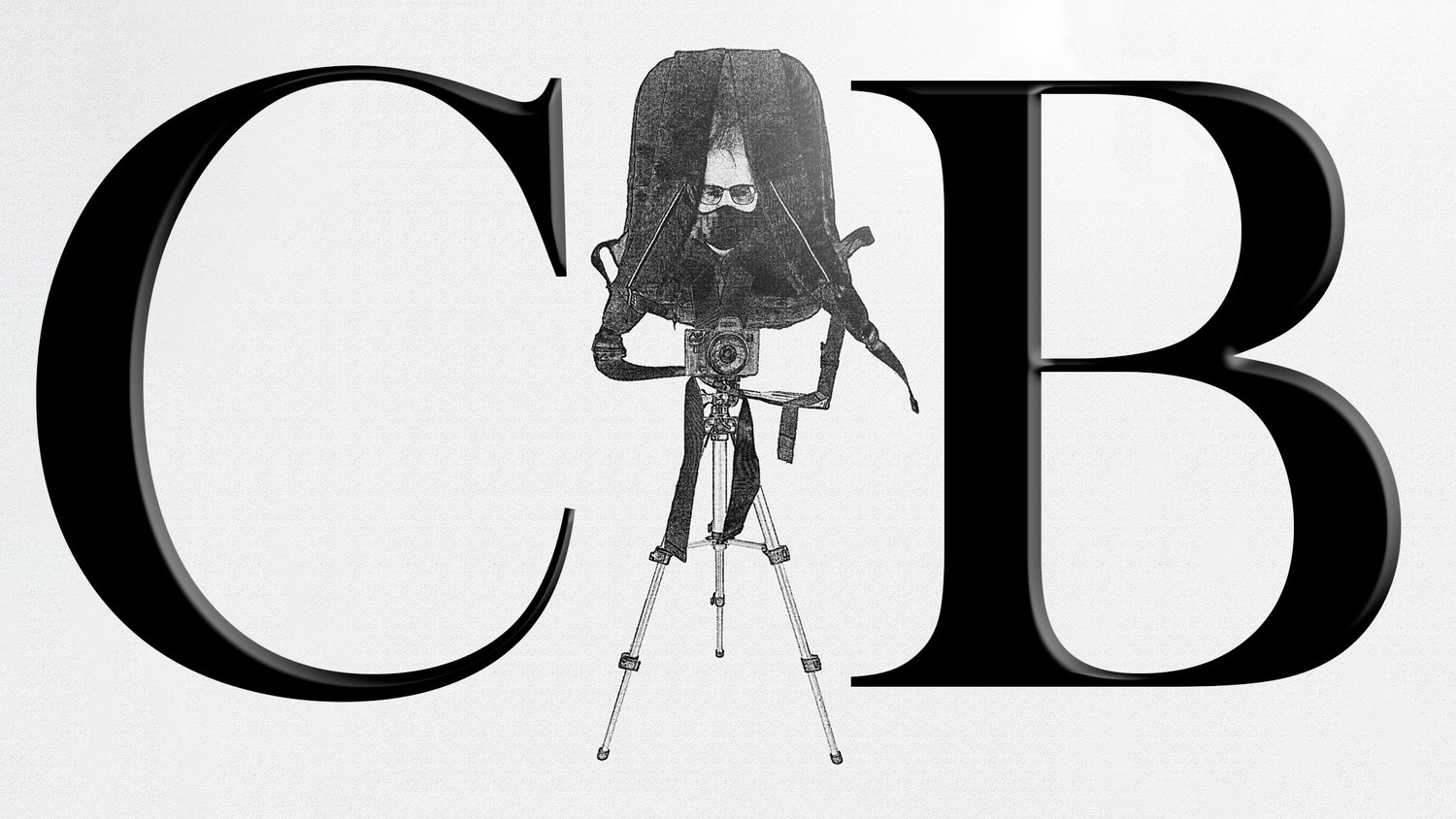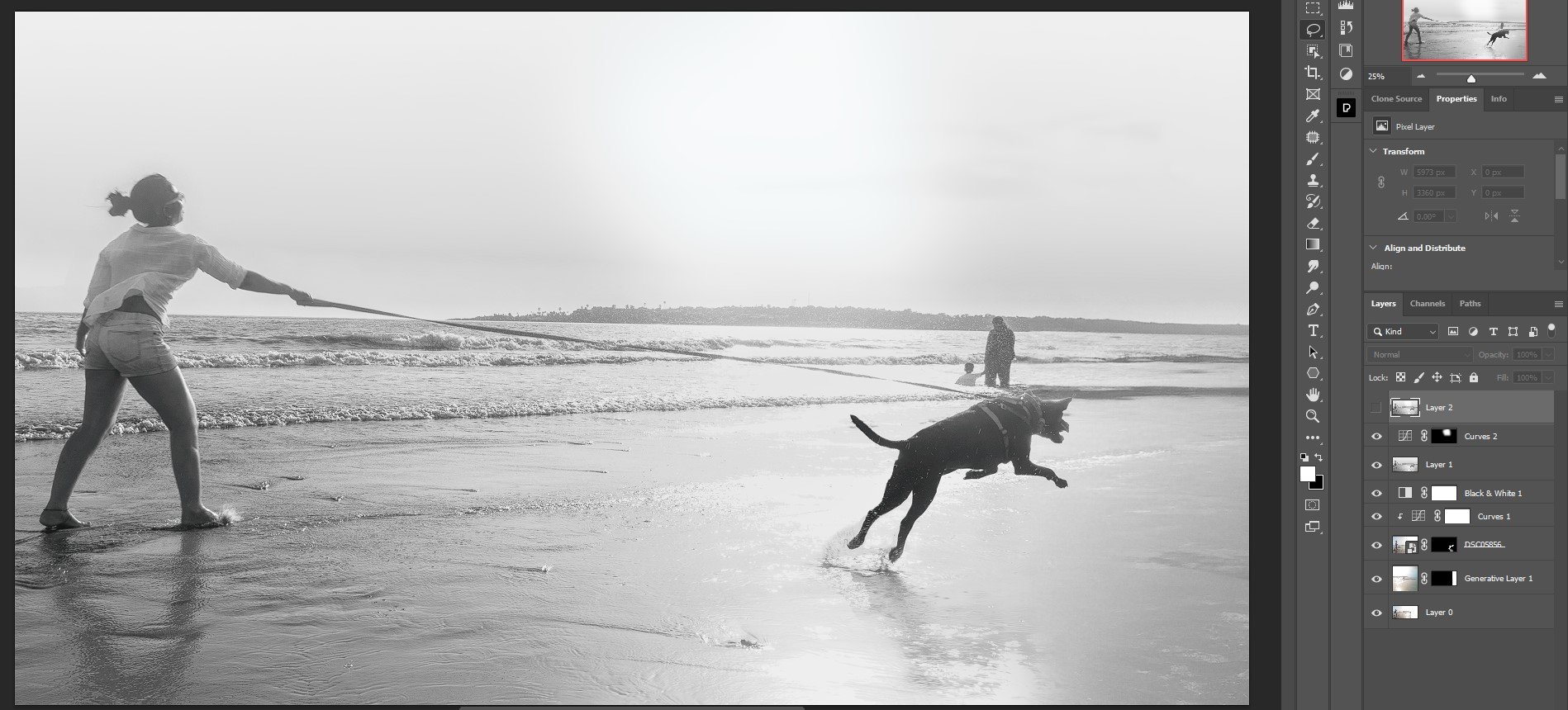Your Artistic Vision Is More Important Than What Your Camera “Sees”
Use production and post-production to fulfill your artistic vision — or fail at it with a smile.
The worlds of production and post-production are on a collision course like two orbiting black holes that first met one another in the deep seems of intergalactic space. This is called a binary black hole. Eventually, they will merge as one and become more terrifyingly beautiful. This is what should happen when the worlds of production and post-production meet: they should take the shape of something magnificent, an artistic vision.
Unfortunately for me, my vision wasn’t realized. I’m referencing the above image. What went wrong? It went wrong on the production side of things. Because I initially wanted a scene that was angled straight on, from a lower perspective looking upward, with both subjects’ heads and shoulders above the horizon line, in black-and-white. That was my artistic vision when I saw a couple and their dog walking along Versova Beach while I was conducting a photo walk this past weekend.
The Vision Takes Shape
When I saw the couple throwing a ball for their dog, I saw the leash fully extend. But when I squared up to start taking photos, they were ready to move on. I had to stop them and ask them to pose for me, and I briefly explained what I wanted. Each of the couple took turns throwing the ball but I could never capture in one frame what I wanted. The leash was pretty damned long, to begin with! And the throws and the dog’s speed made it difficult to predict exactly where I should be framing up my subjects at 24mm. And I didn’t really want to keep working on my subjects since I wasn’t paying them for their efforts and they were kind enough to participate. I sent them the best pictures of the shoot, including the featured image.
When I got home, I knew I had a problem. I knew I didn’t have the shot. And I was going to forget about it and just edit the other images I’d captured. But then I saw two frames that changed my mind. One was of the woman holding an extended leash. One was of the dog in the most dramatic form I had captured out of the dozen or so shots I had of the session.
Post-Production Photoshop Breakdown
This shot was my favorite one because it was the most dramatic, starting with the woman’s stance as she’s anticipating being yanked off her feet when the dog reaches the end of the leash. Problem is, I’ve got no dog!
Here’s the second shot. This was the best, most dramatic shot I could manage of the dog in pursuit in a game of fetch. Of course, the problems here are the leash and the woman’s pose.
So I had to bring these elements together in Photoshop. I wanted to use the very first image as my background. But I needed more space to include the dog. So I extended the frame using the Crop tool.
Now, I could work put a lot of manual labor into clone-stamping and trying out Content Aware Fill, but these methods weren’t working well and I didn’t want to spend an hour tinkering with it to make it look natural. Fortunately, in Photoshop Beta right now, there’s a new feature called Generative Fill. And I simply used the Rectangular Marquee Tool to select the white frame. And voila! Adobe’s AI filled in the rest of the scene for me.
The next step was to mask out the dog in the second shot. Then I dragged that file and dropped it into my background. If you look closely at the layer mask, you’ll notice that I had to paint out some of the selection to make the dog and its shadow blend in.
I wasn’t too happy with the dog’s contrast, so I clipped a Curves adjustment layer to the dog layer to darken it up.
Then I added a Black and White adjustment layer and tweaked the settings for the best overall look.
Next, I replaced the sky using Luminar Neo as a plugin. I could have used Photoshop for this but there are far more skies in Neo. I wanted something simple without any puffy clouds so that it looked closer to the seen.
Plus, my Sony ZV-1 didn’t do a great job of rendering the sun. All the highlights are blown and the sky looks pretty damned ugly to my eyes.
Now, I have highlights on the beach and no real light source that produced them. I had to re-introduce the sun back into the image. To do this, I simply used the Lasso tool to make a selection. Then I feathered it and created a Curves adjustment layer to brighten the area. It’s a lot more subtle of an effect.
In the last step, I created another Stamp Visible layer and added noise to the image to bring it some cohesion. You probably can’t see it as well because this is a screenshot of a low-res image, but it’s there. And that’s it!
It’s Not About the Tools; It’s About Your Artistic Vision
Artistic vision is about using tools to bring about a piece of artwork. There are no rules, only intention. To debunk a myth that some photographers believe in the frame and what you capture in one photo isn’t meant to be left alone. You’re supposed to edit it. You’re supposed to make use of your camera’s Raw file format (if you can shoot Raw) and powerful photo editing tools like Photoshop to realize your artistic vision. You’re allowed to manipulate the image in any way you deem fit. Realism is overrated. And there’s nothing really sacred about leaving the end results up to your camera. This is where amateurs and the lazy part ways with artists and artistic vision. We’re sculptors, we’re not cogs tasked with reproducing the same set of limitations as rendered by one tool, a camera, for instance. Don’t fall in love with the tools. Fall in love with your artistic vision.










